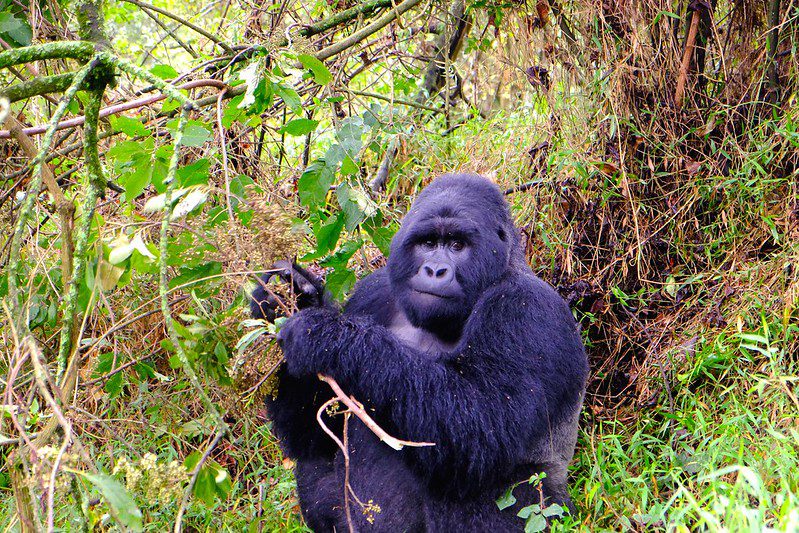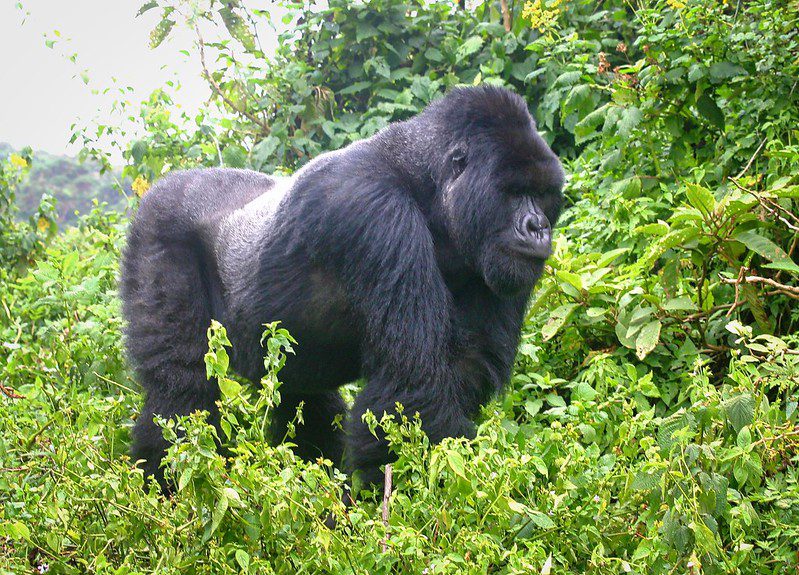The Unique Characteristics of a Silverback Mountain Gorilla
The silverback mountain gorilla is one of the most iconic and awe-inspiring creatures in the animal kingdom. As the dominant male in a gorilla group, the silverback plays a crucial role in the survival and cohesion of his troop. His physical strength, intelligence, and leadership qualities make him a fascinating subject of study and admiration. This article delves into the unique characteristics of a silverback mountain gorilla, exploring what sets him apart from other primates and why he is such a vital figure in the gorilla world.
- Physical Characteristics: The Mark of a Leader

Size and Strength
Silverback mountain gorillas are the largest living primates, with males weighing between 135 to 220 kilograms (300 to 485 pounds) and standing up to 1.8 meters (6 feet) tall when upright. Their immense size and muscular build are key to their role as protectors and leaders. Their broad chests, powerful arms, and strong legs enable them to defend their group from threats, including rival males and predators.
The Silver Streak
The most distinctive feature of a silverback is the patch of silver or gray hair that develops on his back and hips as he matures. This silver streak, which contrasts with the darker fur on the rest of his body, is a sign of his dominance and maturity. It typically appears when a male gorilla reaches around 12 to 15 years of age, marking his transition to adulthood and leadership.
Facial Features
Silverbacks have a prominent sagittal crest—a bony ridge on the top of their skulls—that supports their powerful jaw muscles. This feature, combined with their large canines, gives them a formidable appearance. Their expressive faces, with deep-set eyes and a broad nose, convey a range of emotions, from curiosity to aggression.
- Social Role: The Pillar of the Troop
Leadership and Decision-Making
The silverback is the undisputed leader of his troop, which typically consists of 5 to 30 individuals, including females, juveniles, and infants. He makes all the major decisions for the group, such as where to forage, when to rest, and where to sleep. His leadership ensures the safety and well-being of the troop, as he is constantly vigilant for potential threats.
Protector and Mediator
One of the silverback’s primary responsibilities is to protect his group from danger. He will confront rival males, predators, or even humans if he perceives a threat. Despite his intimidating presence, silverbacks are generally peaceful and use displays of strength—such as chest-beating, vocalizations, and mock charges—to deter conflicts rather than engage in physical combat. Within the troop, he also mediates disputes between females or juveniles, maintaining harmony and order.
Father Figure
Silverbacks play a nurturing role within their troops, often interacting affectionately with infants and juveniles. They tolerate the playful antics of young gorillas and may even carry them on their backs. This paternal behavior strengthens the bonds within the group and contributes to the social development of the younger members.
- Behavior and Communication: The Language of a Leader

Chest-Beating: A Signature Display
One of the most iconic behaviors of a silverback is chest-beating. This display, which involves pounding their chests with cupped hands, serves multiple purposes. It can be a warning to rivals, a show of strength to intimidate predators, or a means of asserting dominance within the troop. The sound of a silverback’s chest-beating can be heard from a considerable distance, making it an effective form of communication.
Vocalizations
Silverbacks use a variety of vocalizations to communicate with their troop and other gorillas. These include grunts, hoots, barks, and roars, each conveying different messages. For example, a deep, guttural roar may signal alarm or aggression, while softer grunts are used to maintain contact with group members.
Body Language
A silverback’s body language is a key aspect of his communication. Dominant postures, such as standing upright or strutting with exaggerated movements, reinforce his authority. Conversely, submissive behaviors, like crouching or avoiding eye contact, are displayed by other members of the troop to acknowledge his dominance.
- Intelligence and Problem-Solving: A Keen Mind
Tool Use
While not as prolific as chimpanzees in using tools, silverback gorillas have demonstrated problem-solving abilities and creativity. For example, they have been observed using sticks to measure the depth of water or to retrieve food. These behaviors highlight their intelligence and adaptability.
Memory and Navigation
Silverbacks possess an impressive memory, which is essential for navigating their vast home ranges. They remember the locations of food sources, waterholes, and safe resting sites, ensuring the survival of their troop. Their ability to plan and make decisions based on past experiences further underscores their cognitive abilities.
- Conservation Status: A Symbol of Hope
Endangered Species
Mountain gorillas, including silverbacks, are classified as endangered, with only about 1,000 individuals remaining in the wild. Their populations are threatened by habitat loss, poaching, and human-wildlife conflict. Conservation efforts, such as anti-poaching patrols, habitat restoration, and ecotourism, have helped stabilize their numbers in recent years.
Ecotourism and Awareness
Silverback gorillas are a major draw for ecotourism in countries like Uganda, Rwanda, and the Democratic Republic of Congo. Gorilla trekking tours not only provide visitors with a once-in-a-lifetime experience but also generate revenue for conservation initiatives and local communities. By raising awareness about the plight of mountain gorillas, these efforts contribute to their long-term survival.
- Cultural Significance: A Source of Inspiration
Symbol of Strength and Wisdom
In many African cultures, the silverback gorilla is revered as a symbol of strength, wisdom, and leadership. His imposing presence and protective nature have inspired stories, myths, and artistic representations. He is often seen as a guardian of the forest, embodying the spirit of the wilderness.
Connection to Humans
As one of our closest relatives in the animal kingdom, sharing approximately 98% of our DNA, the silverback gorilla offers valuable insights into human evolution, behavior, and social structures. Studying these magnificent creatures helps us better understand our own place in the natural world.
The Majesty of the Silverback
The silverback mountain gorilla is a remarkable creature, embodying strength, intelligence, and leadership. His unique characteristics—from his imposing physical presence to his nurturing role within the troop—make him a vital figure in the gorilla world. As a symbol of hope and resilience, the silverback reminds us of the importance of protecting our planet’s biodiversity and the incredible creatures that inhabit it.
By supporting conservation efforts and promoting sustainable tourism, we can ensure that future generations have the opportunity to witness the majesty of the silverback mountain gorilla in the wild. These gentle giants are not only a testament to the beauty of nature but also a call to action to preserve the delicate balance of our ecosystems.




